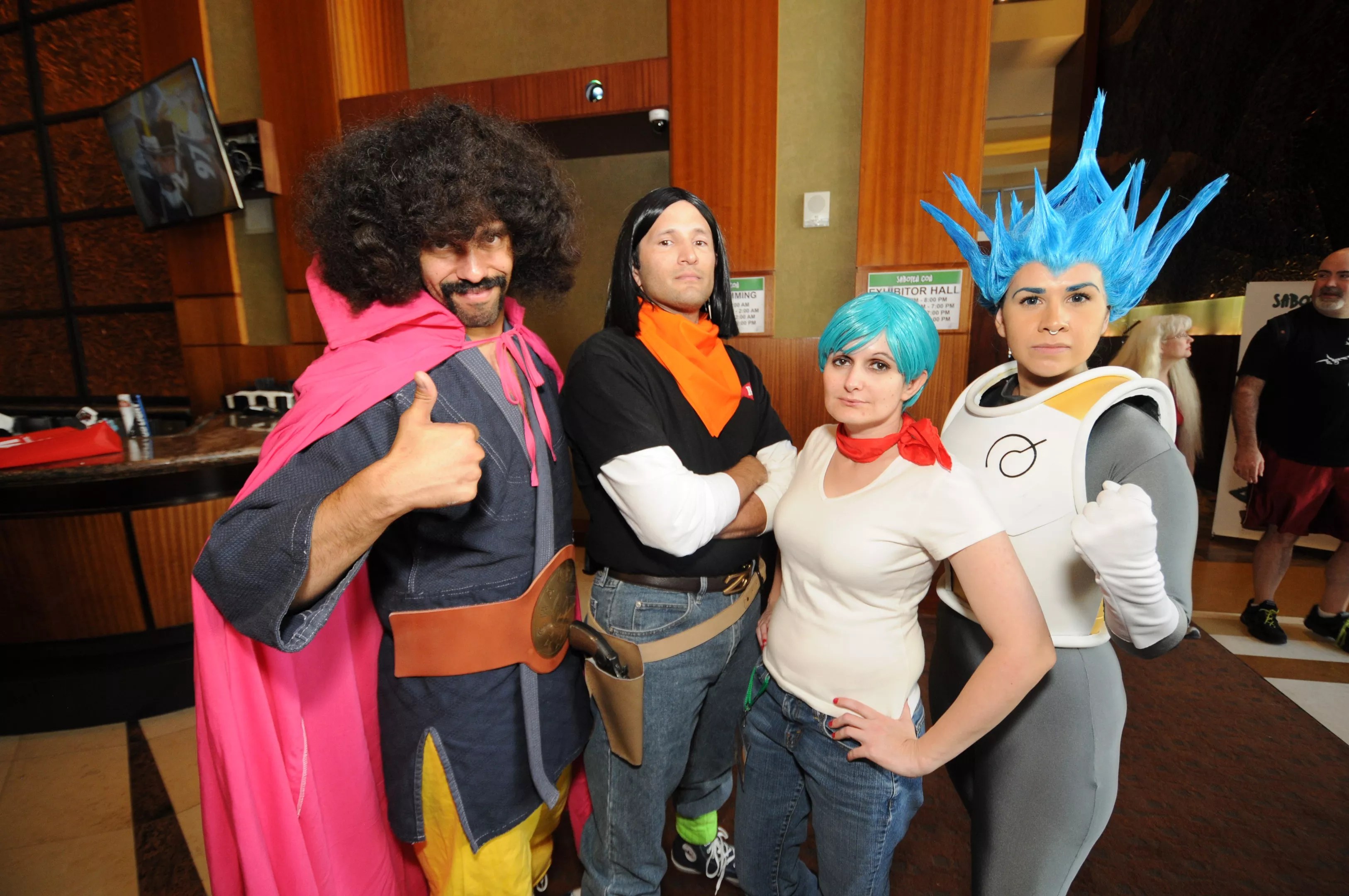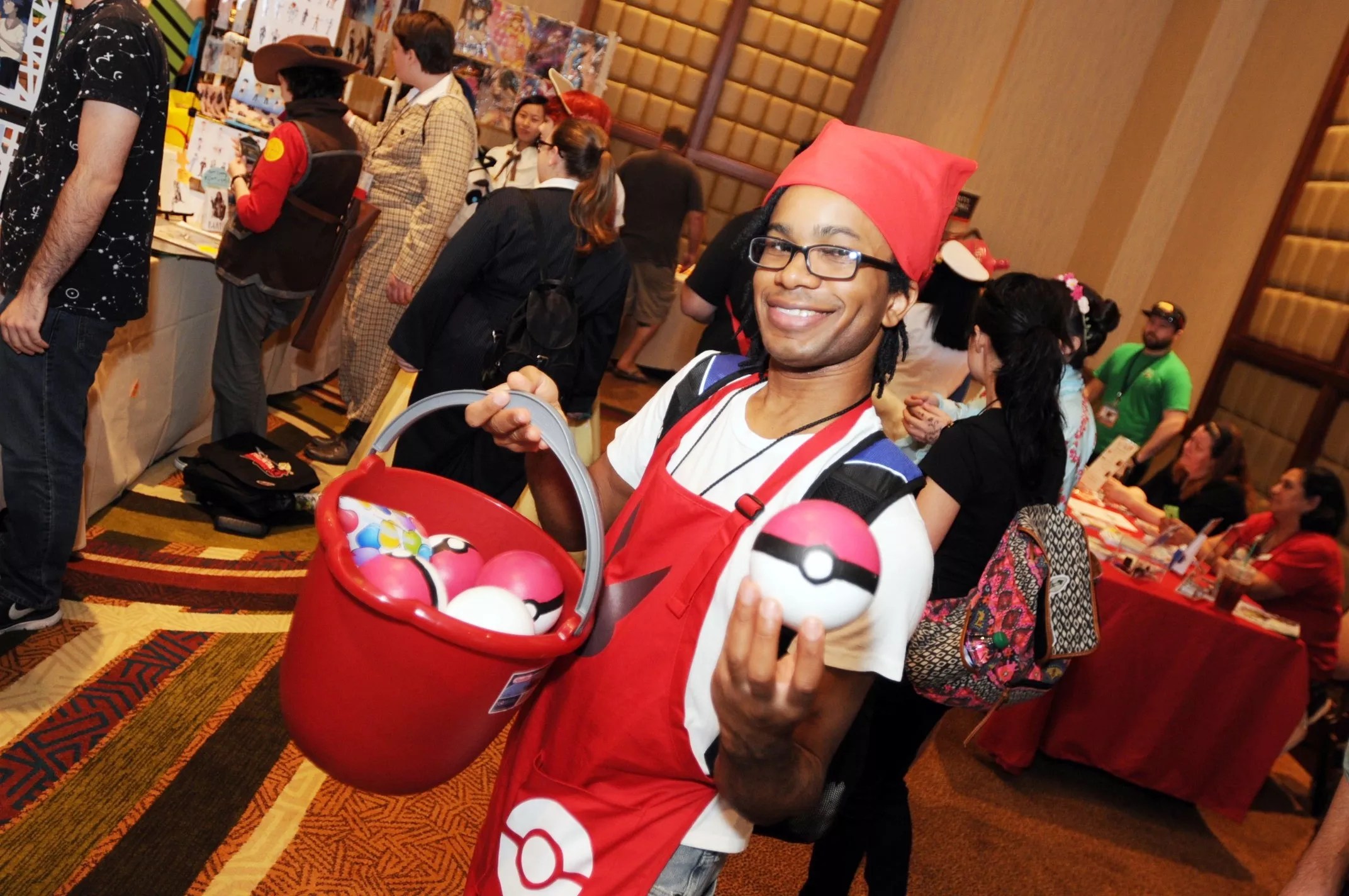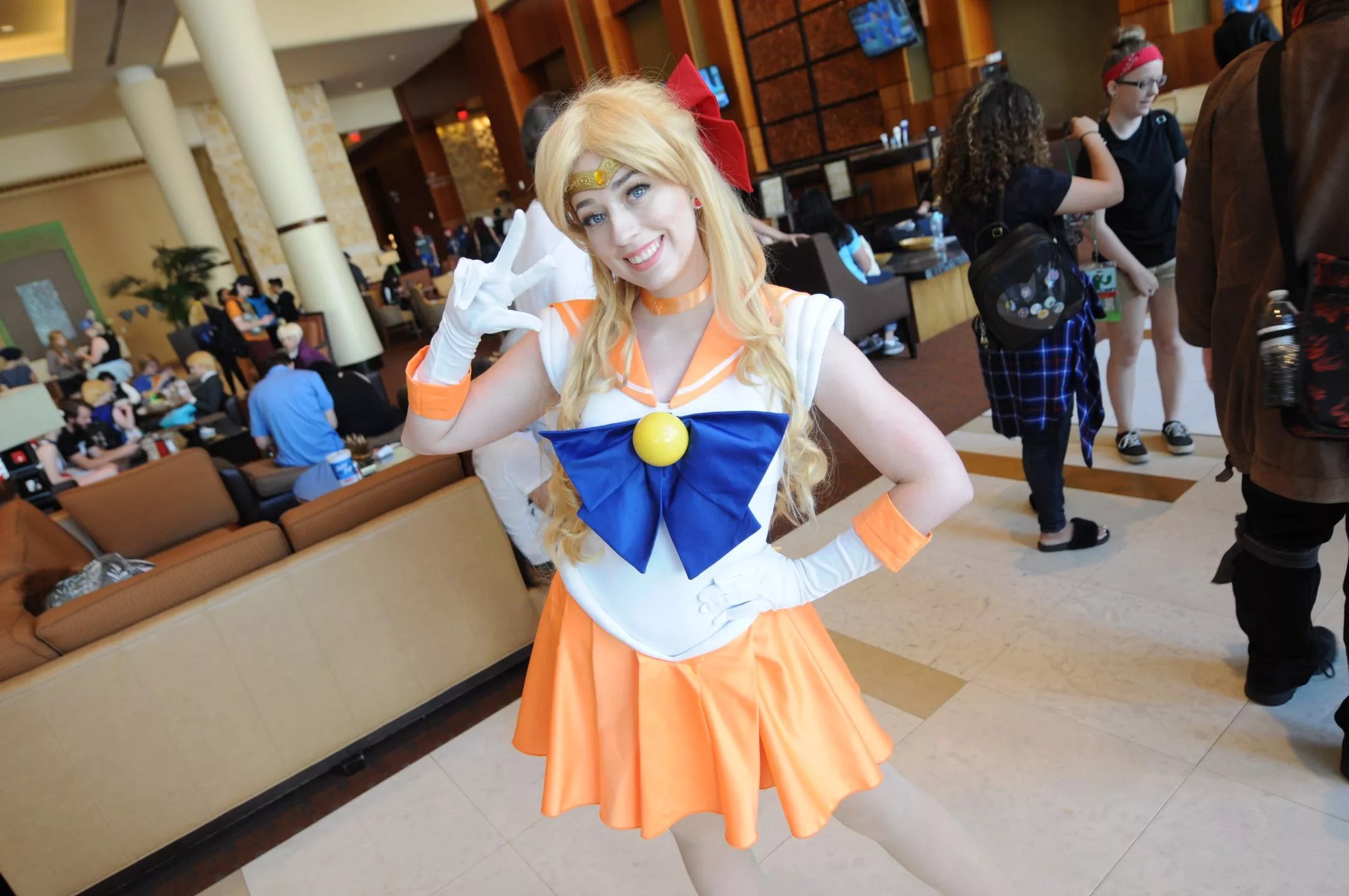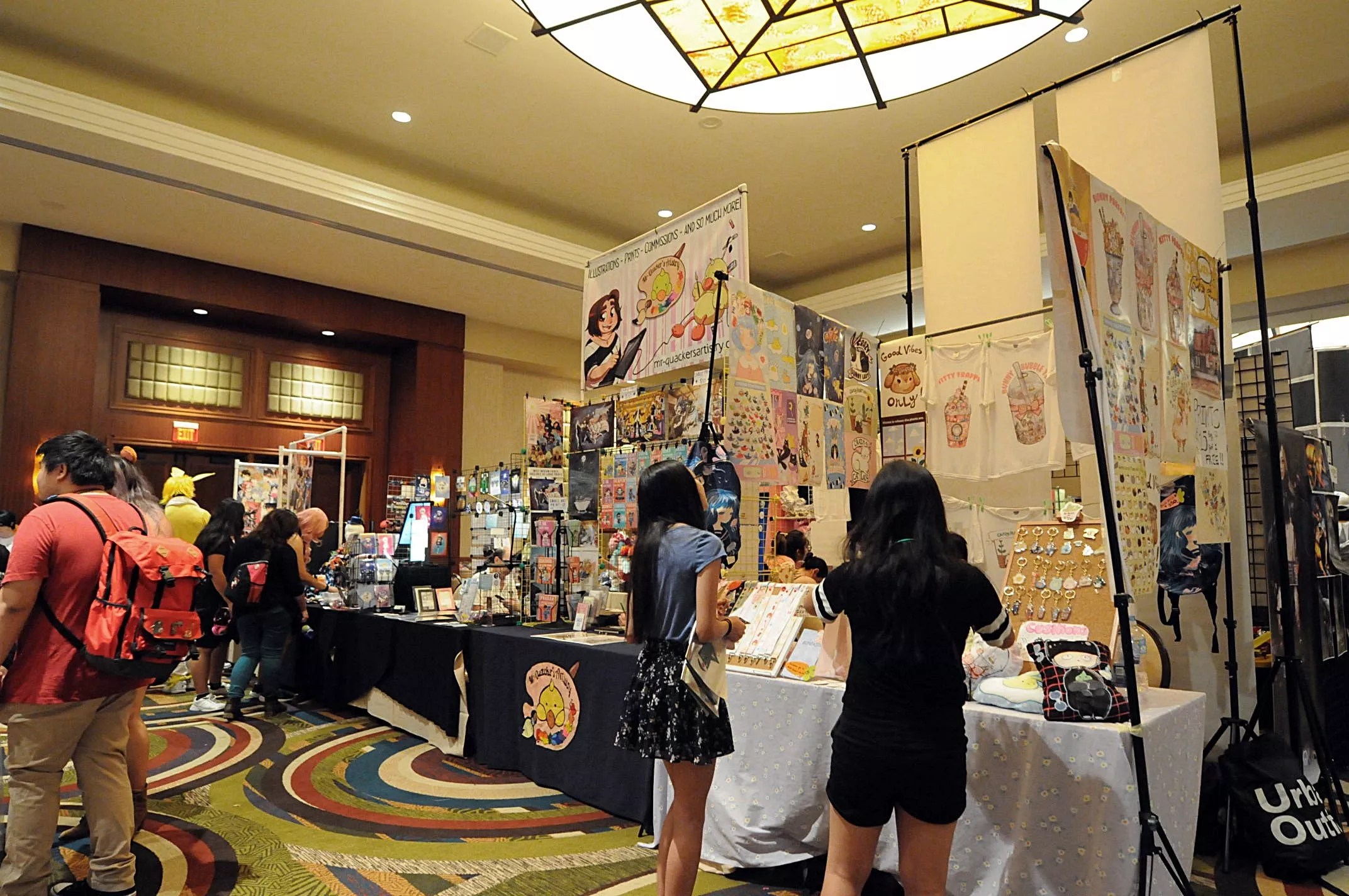
Benjamin Leatherman

Audio By Carbonatix
Greg Fennell might not be as stern-looking as Commander Erwin Smith, but he can rally his troops just as effectively as the “Attack on Titan” character.
On a recent Saturday inside the Sheraton Phoenix Downtown, the 50-year-old entrepreneur and Arizona resident is doing just that at an all-hands staff meeting for Saboten Con, the local anime and Japanese pop-culture convention he and his wife Stacy have put on since 2008.
After dishing myriad details about this year’s Saboten Con, Fennell thanks the two dozen staff members in attendance for their help in making the convention, which is attended by tens of thousands of people each year, the biggest anime event in Arizona.
“We’re right up there. It’s getting scary to see where we are numbers-wise,” Fennell says. “It’s a testament to you guys for how well this show has run and it’s allowed us from a business standpoint to invest more money into making it bigger and better. So, thank you.”
This year, make your gift count –
Invest in local news that matters.
Our work is funded by readers like you who make voluntary gifts because they value our work and want to see it continue. Make a contribution today to help us reach our $30,000 goal!
Fennell says this year’s Saboten Con, which runs Friday through Monday, will be its biggest yet. The four-day convention will double in size, expanding to two downtown Phoenix hotels with 40-plus celebrity guests and hundreds of cosplayers. More than 800 hours of programming will range from Japanese pop-culture activities, like maid cafes and karaoke sessions, to a separate gaming and esports event called SaboSlam.

Cosplayers at Saboten Con 2016 at the Sheraton Phoenix Downtown Hotel.
Benjamin Leatherman
Saboten Con 2023 also marks the event’s 15th anniversary, which Fennell tells Phoenix New Times is an accomplishment for any geek convention.
“[Cons] come and go, some after only a few years, so we’ve obviously been doing something right,” he says.
Saboten Con has been synonymous with anime fandom in Arizona since debuting in 2008. Originally a spinoff of Phoenix Comicon (now Phoenix Fan Fusion), the event has celebrated the Japanese-born animation style and art form, serving as a gateway to anime culture for a generation of Arizona geeks. It laid the groundwork for local anime fans and attracted die-hards and casuals alike, giving them a space to engage with one another, enjoy their favorite titles and cosplay characters.
Fennell says that’s their ultimate goal for Saboten Con and the other anime events their company, Monkey Paw Entertainment, puts on in Arizona and New Mexico. The events include Con-Nichiwa in Tucson and Kikori Con in Flagstaff.
“My wife and I have been doing this for 15 [years], and we’ve literally never said, ‘We need to make X amount of money out of this show,'” he says. “It’s never been about the money, just making our show and our community better. And I think that’s one of the reasons why we’re so successful.”
Anime’s massive increase in popularity over the past decade also played a major factor.

A “Pokémon” fan at Saboten Con 2015.
Benjamin Leatherman
The anime boom
Saboten Con’s milestone year comes at a time when anime is bigger than ever and is only continuing to grow.
In 2022, the global anime industry raked in $28 billion, a figure predicted to double by decade’s end. Sales of manga – Japanese comics and graphic novels – are also at an all-time high, as the market was valued at $12.3 billion in 2022. Earlier this year, Crunchyroll, the Sony-owned anime streaming service, reportedly topped 10 million paid subscribers worldwide.
Turnout at anime conventions has also increased exponentially – this year’s Anime Expo in Los Angeles boasted a record-breaking 392,000 people in attendance – as has the amount of events being offered. In the Valley, the number of anime-themed cons has tripled in the past three years.
Anime’s fanbase in North America now rivals Japan’s in size, according to LA Weekly, which also notes that the art form is “no longer a nerdy niche form of entertainment” and has “permeated all facets of pop culture.”
You can see evidence of anime’s growing influence throughout metro Phoenix, and not just at events like Saboten Con. In recent years, the Valley has gained multiple anime-themed businesses, including a nightspot (Hi-Score Club in downtown Phoenix), a coffee joint and boutique (Tempe’s ACG Go Anime Store & Cafe) and a popular food truck (MoshiMoshi).
Anime has even been embraced by Phoenix Art Museum. Last fall, it hosted “Mr.: You Can Hear the Song of This Town,” the first U.S. solo exhibition in more than five years by famed Japanese contemporary artist Mr. that was heavily influenced by anime and manga. Featuring close to 50 drawings, sculptures and paintings populated by kawaii-style characters and colorful chaotic scenes, the exhibition’s four-month run was a highlight of PAM’s offerings last year.
It’s a far cry from the 1980s and ’90s when anime was strictly a niche subculture in Phoenix and elsewhere.

Cosplaying the character of Roxas from “Kingdom Hearts II” at Saboten Con 2009.
Kevin Dooley/CC BY 2.0/Flickr
The origins of anime fandom in Arizona
During most of its early history, Japanese animation was largely unknown outside of its native country. From the 1960s onward, seminal anime series like “Astro Boy” and “Speed Racer” came to the West, albeit after being redubbed, retitled and reworked as cartoons for kids.
Bradley Wilson, an associate professor of Japanese language and culture at Arizona State University, says these shows were the first exposure to anime for many Americans, even if they didn’t realize it at the time.
“Anime was being imported into the U.S., but it was often dubbed into English,” Wilson says. “So lots of cartoons people watched as children in the late ’70s and early ’80s included shows like ‘Macross,’ which was retitled ‘Robotech’ in America. But few [kids] knew they were from Japan.”
Fennell and his wife were avid fans of the show while growing up in Pittsburgh.
“The big thing was watching ‘Robotech’ after school every day. We’d ride the bus home together and I’d get home in time to watch,” he says. “I was hooked.”

Voice actors from the American version of “Robotech” at Saboten Con 2015.
Benjamin Leatherman
By the ’90s, anime became a little more prevalent thanks to the growth of cable channels. Cartoon Network aired series like “Dragon Ball Z” and “Sailor Moon” during its “Toonami” programming block. You could also buy bootleg tapes or attend screenings at geek conventions in the Valley, according to Arizona fandom historian Hal Astell.
“Back when people just called it ‘Japanimation,’ anime was a sci-fi or comics convention thing where they’d have a room where you could watch anime. It was a niche interest within a niche interest,” he says. “It grew to become its own thing when anime fans didn’t want to sit in a room, they wanted a convention of their own.”
They got it in 2005 when the now-defunct AniZona was launched by Valley geeks Anthony Grutta, Jason Bustard and David Hungerford. Other local nerd events of the era, including Phoenix Comicon, were featuring anime programming but AniZona’s co-founders saw the need for a dedicated convention.
Fennell, who’d moved to the Valley the prior year with his wife and attended AniZona’s first few editions, says it was a “great con that just didn’t last.”
“AniZona was the first true anime convention here in Arizona,” Fennell says. “We went every year and were actually going to help run some things for them, but they canceled it [in 2008] because they weren’t getting sales.”
It opened the door for Saboten Con.

A cosplayer portraying Kakashi Hatake from “Naruto” at Saboten Con 2010.
Kevin Dooley/CC BY 2.0/Flickr
Saboten Con steps in
Within hours of AniZona’s cancelation in 2008, Phoenix Comicon founder Matt Solberg decided to split off his event’s anime content into a separate convention to fill the void. Less than three months later, Saboten Con debuted at the now-defunct Crowne Plaza Phoenix North. Fennell was tapped to oversee programming.
“I was already running the anime [track] at Phoenix Comicon, so it made sense,” he says.
The first year featured appearances by voice talents like Greg Ayres from “Initial D” and Laura Bailey from “Fullmetal Alchemist.” It was a smash hit.
“It was crowded. We had about 1,000 people there, which was more than we expected, but it was a lot of fun,” Fennell says. “The problem was we outgrew the Crowne Plaza the first year.”
And they kept growing, causing Saboten – which is the Japanese word for “cactus” – to move to a series of successively larger hotels. By 2012, they’d relocated to the Renaissance Phoenix Glendale Hotel & Spa.

The crowd at Saboten Con 2010 at the Pointe Hilton Squaw Peak Resort (now Hilton Phoenix Resort at the Peak).
Kevin Dooley/CC BY 2.0/Flickr
Meanwhile, the Fennells were making big moves of their own, buying Saboten Con from Solberg’s company, Square Egg Entertainment, and quitting their day jobs to focus on running their conventions. The roster had grown to include Kikori Con and Con-Nichiwa.
Greg says turning their passion for anime into a full-time profession was a tough but necessary decision.
“We realized if we didn’t hang up our hats and do this 100%, we weren’t going to make things grow as well as we could, because we couldn’t put the time into it,” he says. “So we bit the bullet.”
Their gamble paid off. Saboten Con continued growing, especially after moving to their current home at the Sheraton Phoenix Downtown in 2015. Attendance topped 10,000 people in 2017.
The con’s biggest turnout to date came in 2021, its first edition following a 2020 cancellation due to COVID-19, when more than 23,000 people attended. Fennell credits the monster number to pent-up demand during the pandemic.
It wasn’t the only benefit of the lockdown.

One of many “Sailor Moon” cosplayers that have attended Saboten Con over the years.
Benjamin Leatherman
How the pandemic fueled the anime boom
When the world went on lockdown in 2020, many discovered anime. In other words, otaku and weebs weren’t the only ones enjoying shows like “Naruto” or “One Punch Man” during the darkest days of the pandemic.
“There were only so many shows you could watch, so I think [anime] was something people found, got into and told others, ‘Hey, have you seen this?'” Fennell says. “I think that’s what helped the entire industry explode as well.”
Wilson says interest in anime was already increasing prior to the pandemic and lockdown helped amplify it.
“It had been on that trajectory already. Watching anime and reading [manga] comics are activities you can do solo without having to go out,” Wilson says. “And when you’ve got a whole world of people kind of trapped in their house with nothing to do, people turned [to anime].”
When people emerged from lockdown in 2021, many were eager to celebrate their newfound fandom at anime events like Saboten Con. Fennell says it wasn’t just Zoomers.
“We got a higher age group coming to Saboten after the pandemic because you had a lot of parents who sat down and watched anime with their kids for the first time and fell in love,” Fennell says. “We had college students and 20-year-olds that found it during the time they were just sitting at home.”

The scene inside the vendor hall at Saboten Con.
Benjamin Leatherman
More cons, more competition
Fennell isn’t the only Valley geek entrepreneur who’s been reaping the windfall of the post-pandemic anime boom. The number of anime cons in the Valley has increased threefold to almost a dozen since the pandemic.
“It’s just gone nuts the last few years with all the new anime [cons],” Astell says.
One of the newer events is UwU Con, an “anime experience” that debuted in October 2022 at Legacy Park in Mesa. Co-founded by Chef Justin Park of local Korean restaurant Drunken Tiger, app developer Jared Nichols and Preston Statzer of Olympus Games in Mesa, it included three days of anime voice actors, a zipline, and a curated selection of hand-picked vendors and Asian-fusion food trucks. An estimated 12,000 people attended, according to UwU Con’s owners.
Statzer, who has co-produced local anime events around the Valley since 2021, says their event is designed to be different from Saboten Con.
“They have their strong points, like they do really well at the panels and everything, but we’re a totally different [event],” he says. “We’re going a different route to highlight food and voice actors. We wanted to put our own spin on conventions.”
Statzer is willing to give Saboten Con its due, though.
“I think Greg has done an amazing job over the past 15 years with the consistency he’s brought to the Valley,” Statzer says. “They’ve become a staple anime convention who have paved the way for [others]. They helped create the anime scene and lay the groundwork.”
Fennell says he isn’t worried if anime fans have a multitude of other cons to choose from now.
“I don’t look at those other shows as competition. I honestly see them as helping the community just get more people to know about anime,” he says. “We really do it just for the community. We’ve always said, ‘If you do the right thing, you’ll get back in return and you’ll get the growth that you’re trying to get.'”
Saboten Con 2023 runs Friday to Monday at the Sheraton Phoenix Downtown, 340 N. 3rd St., and the Renaissance Phoenix Downtown Hotel, 100 N. 1st St. See sabotencon.com.